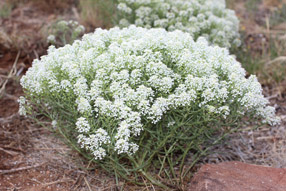Food:
"Spicy-hot or peppery flavor. Use in salads, sauces, soups, and aalsa. Roasted seeds may be ground into a spicy flour. Overcoking reduces spiciness. Seeds can also be sprouted." (Seebeck 59)
"Leaves as salad or pot greens, in spring; seed fresh or dried." (Tatum 84)
"The entire plant is edible. Young leaves can be used as a potherb, sautéed or used fresh in salads. The young seedpods can be used as a substitute black pepper. The leaves contain protein, iron, vitamin A and vitamin C. The flowers can be tossed into a salad and the roots. This entire plant can be put into a food processor along with turmeric, vinegar, miso, garlic and salt to make wild mustard. Collect roots, wash them, crush them and add vinegar and salt you have a horseradish substitute." (Edible Wild Food)
Medicine:
"The people of Tularosa say that if one mashes the plant and mixes it with powdered lime, and then places the preparation in the wounds of animals, 'it will kill the worms.'" (Curtin 114)
"These plants are rich in vitamins A, B and C and also contain considerable amounts of trace minerals. The seeds, which are said to stimulate the production of digestive juices, have been used for many years as an aid for digestion. --- Mustard seed has also been used in poultices for healing wounds, and it was sometimes taken in large quantities as a laxative." (Kershaw 120)
Internet Resources
